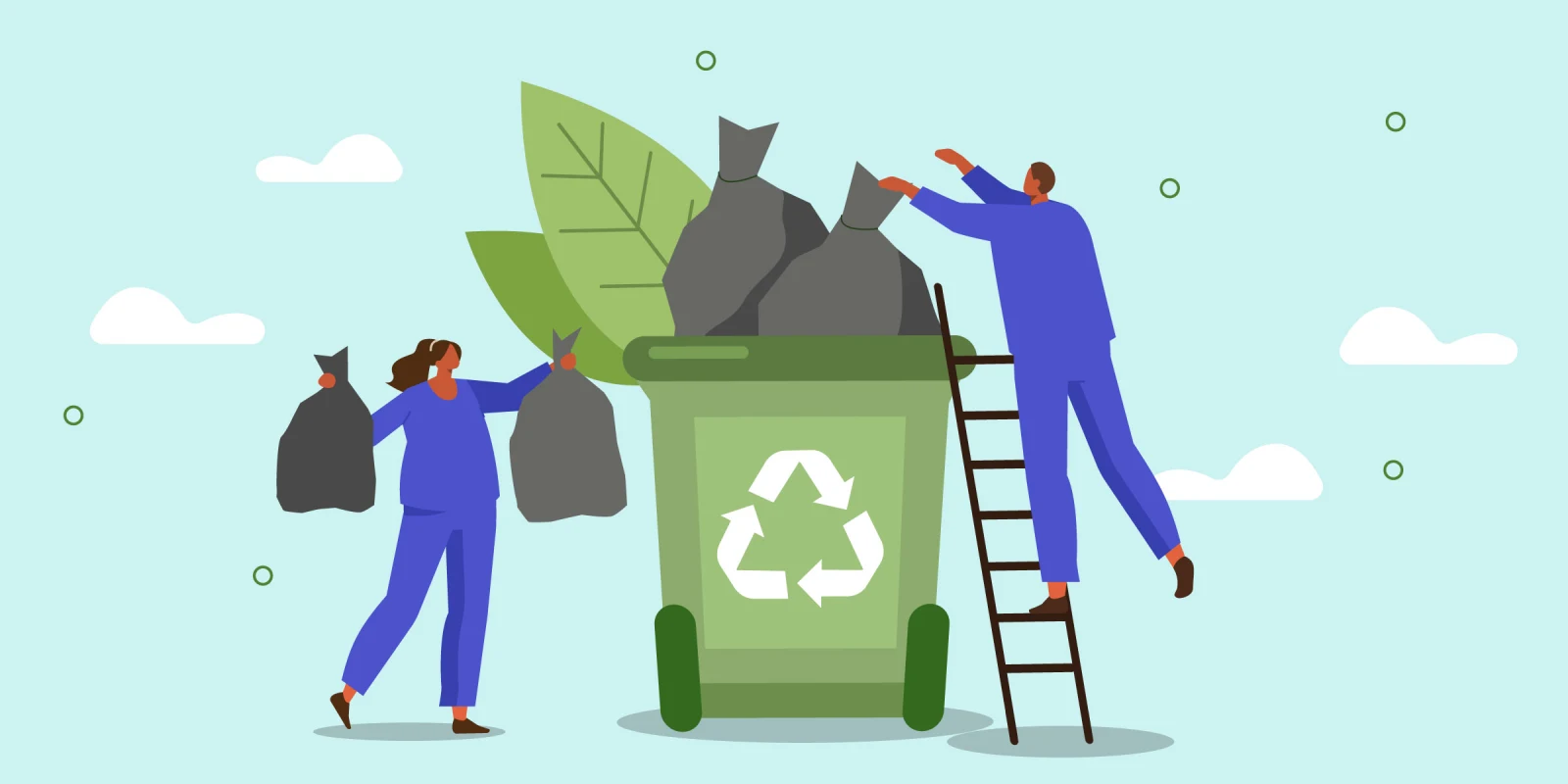I grew up in Austin, Texas in a “recycling household.” We had our trash can adjacent to the recycling bin, the compost bin, and the soft plastics bin. We’d take them out once a week, and usually the trash bin would be the emptiest of them since we made heavy use of the others to minimize the landfill waste we generated. When I moved to Cleveland, Ohio for medical school, it was a different story. I lived in a shared house with a trash can and a recycling bin. There was no city-wide composting, and I found a handful of grocery stores that accepted soft plastics, but none nearby. One year after living in that house, the city phased out the recycling program due to processing difficulties, and 100% of the city’s trash (including recyclables) went to the landfill. At the time, I was rotating at the Cleveland Clinic’s main hospital location. It’s a huge facility, “like a small city in itself” (according to patients). It was dotted with trash cans on almost every corner of the interconnected buildings with a handful of recycling bins here and there. Housekeepers would empty them daily; I constantly saw them wheeling large carts of waste through the halls. I often wondered how the waste was disposed of, and it prompted me to consider: given how much waste disposal comes up in everyday life and impacts public health in general (both aesthetically and due to daily waste exposure/climate change), why is there not more emphasis on our role in educating the public?
General waste is disposed of in a lot of ways and is very heterogenous, between cities, neighborhoods, even between public facilities (including medical centers/clinics). This can make it challenging to implement new projects or policies regarding waste diversion since the networks and processes leading to waste disposal are often shrouded in mystery. In the health care setting, often several groups or individuals with variable tiers of involvement manage these processes. Rarely is there a single person in charge, and rarer still are those individuals clinicians. Generally, once people throw away their trash, they pay it no further mind and don’t know where or how the waste will be dealt with. But there are huge health implications of waste disposal, and thus we should be at least generally aware of resources for reducing its potential negative effects, as well as why those effects can occur.
Since waste disposal has big impacts on climate change, and climate change impacts public health, it is a preventive health topic and therefore is everyone’s business. If treated as a preventive screening topic at routine health visits, there could be a massive impact on communities. Just like diet and exercise are routinely discussed regarding the prevention of diabetes and heart disease, the topics of climate change and waste disposal could be given 2-3 minutes of discussion to address an individual’s needs. For instance, many people do not realize increased greenhouse gas emissions and air pollution contribute to increased levels of ground level ozone, sulfur dioxide, and carbon monoxide, which increase systemic inflammation and act on vagal pathways (1, 2, 3, 4). They also contribute to increased environmental lead levels (from leaching), which accumulate in bone and brain tissue to cause toxicity. They also increase nitrogen dioxide which reacts with ammonia and small compounds in the air to form ultrafine particles that deposit in the lungs and contribute to disease.
Those with disadvantaged socioeconomic backgrounds are also disproportionately impacted for many reasons, making education for people in these communities even more critical. Explaining why waste disposal matters from a health context can help motivate people to seek education and action on alternative waste disposal options available. They also lend credibility to the topic of climate change given the information comes from a credible health care source. This applies to both patients and health care staff: increased awareness among staff means increased interest and advocacy for implementation of sustainable disposal methods in the health care setting, which is noted to contribute to the formation of up to 10% of greenhouse gas emissions in the U.S. annually.
Having the health care office as a resource location can also aid people who may otherwise not know where to dispose of certain things, or don’t know what kind of disposal they are necessarily even looking for (e.g., when trying to dispose of things like nail polish, tattered clothing, face masks, etc.). Public health care facilities should be partnered with local energy and waste processing centers to keep staff informed on resources that are available, or perhaps have a sustainability liaison role designated to one or more people who work to curate and maintain a resource inventory. While it may seem unusual to take time in an annual visit to talk about the sustainability of how a person lives, gets around, consumes resources, and disposes of their “waste,” these are the habits that shape a person’s health both now and in the distant future. They should be a part of every preventive care visit and should be a point of sustainable intervention that any health care staff can feel comfortable discussing. For this reason, there should be dedicated education for clinicians in training about these topics, and a shift toward incorporating the subject in the preventive health care setting.
This Earth Day, how are you improving your sustainability? Share strategies in the comments.
Dr. Wottrich is a second year neurology resident in Austin, Texas. Her academic interests include neurological pain syndromes, integrative medicine, immersive daydreaming, and environmental sustainability in health care.
Image by Irina Strelnikova / Shutterstock







